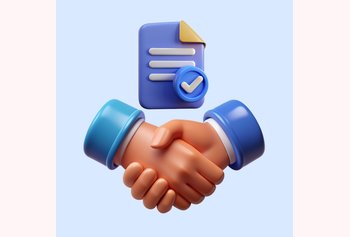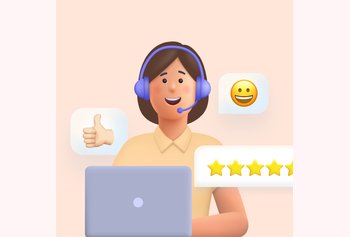How to Provide Outstanding Customer Service in Healthcare
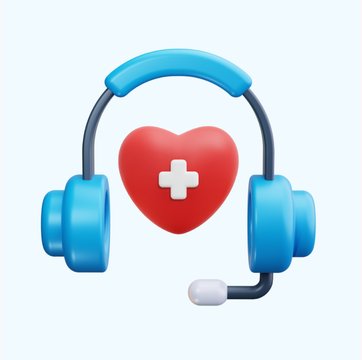
Table of contents
When you think of industries where exceptional customer service is critical, your mind might drift towards industries like hospitality, aviation, and maybe retail. Healthcare would hardly be the first industry to come to your mind.
But, the fact remains that at its core, healthcare is a customer service industry. While bustling clinics and emergency rooms don’t paint the perfect picture of customer service in our minds, it is pretty evident that customers (or patients in this case) are primarily dependent on the quality of care provided and the daily interaction between the staff and the patients.
In that sense, every employee of a healthcare company, irrespective of whether they directly interact with patients, is potentially a customer service representative — one whose job is to ensure that patients receive the best care possible.
So, if you’re looking to find out how to provide great customer service in the healthcare industry, here’s everything you need to know about. From the proven strategies, to examples of real life scenarios, we’ve created a comprehensive guide.
Table of Contents
- What does providing the best care mean?
- Strategies to improve healthcare customer service
- How Can A Centralized Customer Support Platform Impact Modern Healthcare?
- The Impact of Poor Customer Service in Healthcare
- Wrapping up
- Frequently Asked Questions (FAQ)
What does providing the best care mean?
According to James Merlino, MD, Chief Experience Officer at Cleveland Clinic, “Patients are made to feel that, because healthcare is a necessity rather than a luxury, they aren’t entitled to a superior patient experience. And this is probably the biggest mistake our industry makes.”
He believes that to provide the best level of care, healthcare providers must exhibit:
- Care and empathy
- Efficiency and professionalism
- Accurate and timely information
- And a complete sense of trust and privacy.
While care, Empathy, efficiency and professionalism are fairly obvious, with the digitization of healthcare, access to accurate and timely information and patient confidentiality and data privacy are becoming increasingly important.
Cisco’s research shows that 74% of patients wanted the ability to connect with their healthcare providers virtually – over the phone or email instantly. They felt that they could benefit from faster access to care, more convenient management of conditions, and improved access to experts.
Furthermore, according to a report by The Health Research Institute at PwC, 56% of patients in American hospitals viewed the privacy and security of medical information as a key factor in choosing their healthcare provider.
The good news here is that organizations are increasingly paying attention to customer service across the healthcare ecosystem. To further improve the patient-care experience, digitization and adopting innovative solutions and consulting services can play a pivotal role in enhancing the quality and efficiency of care delivery.
Strategies to improve healthcare customer service
Now that you understand the importance of efficient customer service in healthcare, let’s dive into the strategies to enhance CS, simplify communication and deliver personalized care to your patients.
1. Develop a patient-first mentality
It is essential to identify that customer service in healthcare is very different from customer service in other industries. Aside from a few cases, most customers typically do not “want” to be there.
Seeing the doctor or going to a hospital can be an intimidating experience. From the first point of contact with the front office staff to the administrative staff, the waiting room experience, the actual visits with the doctors and nurses, and the follow-up experience, everything plays a vital role in making the patient feel comfortable and at ease.
So it becomes essential for you to have a well-thought-out customer service plan for every touchpoint in the journey towards providing excellent customer service at your clinic/hospital. And the very first method to ensure this is to have a patient-first mentality, across your organization. Your hospital/clinic’s staffing plans and policies must ensure that all your employees understand that your patients are at the core of your business.
2. Hire the right kind of people
You might have the most skilled doctors and nurses in the industry, but to provide a consistent, high-quality healthcare experience, you need to ensure that all of your customer-facing employees display the same level of customer-centricity as your doctors and nurses.
They need to exhibit similar levels of empathy and communicate effectively. So make sure you check for these customer service skills while hiring even for your front office and admin staff.
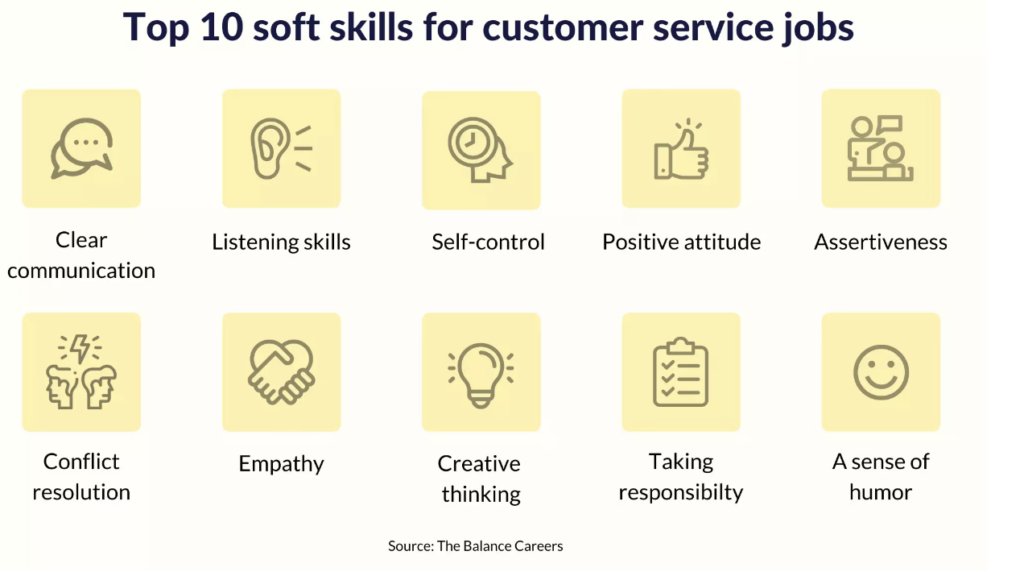
3. Train your employees in the right way
Start by conducting an analysis that help you identify the skill gaps in your team. May be your team needs more hands on training on communication skills, or understanding patient needs, or even handling stressful situations. Once you know where the gaps are, tailor your training program to focus on these areas.
Include real-life examples in your training programs to make them actionable. Role-playing exercises, for example, can be incredibly effective in teaching employees how to manage difficult conversations with patients or their families.
Also, ongoing training as a must, not a one-time thing. Healthcare is always evolving, and so should your team’s skills.
4. Establish clear, measurable goals for every employee:
This step is fairly obvious. Set actionable customer service goals for every team member specific to their function, but ensure that these goals are aligned with your main goal of becoming more patient-centric.

5. Collect feedback from your patients
Get your hands on as much customer feedback as possible and as quickly as you can either in person or via email. Collecting authentic feedback from your patients can give you valuable data and insights on how you are progressing on your quest to provide good customer service.
If patients are struggling to book an appointment, that’s a place to look into. Or if you get to know that your patients are facing difficulties in tracking their follow-ups or having billing issues, that’s another pain point, that needs a resolution.
CSAT surveys give you a fair idea of how satisfied your customers are with your services. Implement them in your follow-up reminders, or once patients complete their treatment procedure.
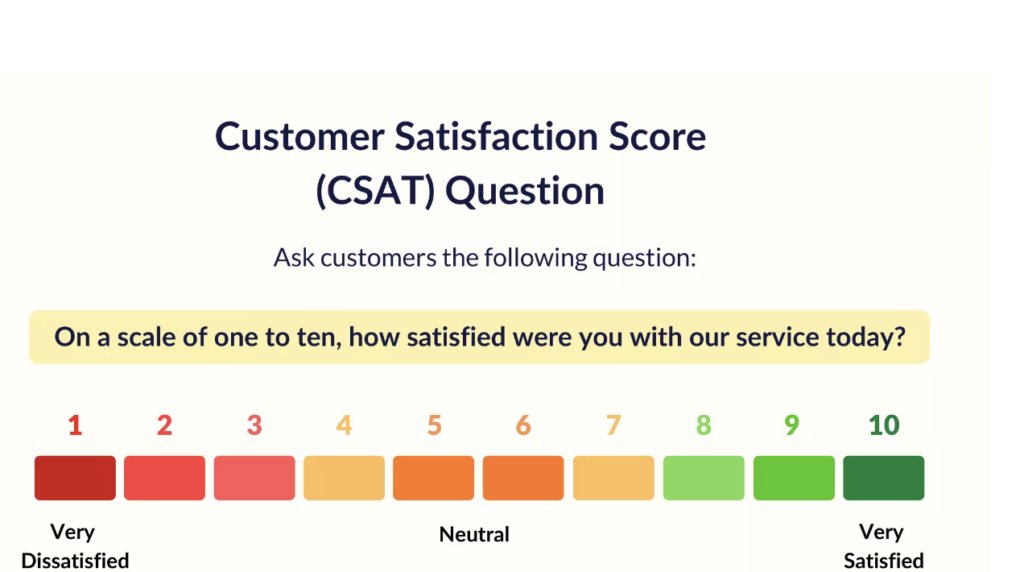
6. Prioritize security protocols in place
Protecting patients from invasions to their privacy is non-negotiable. Ensure that your entire tech stack is compliant with the established standards of data protection as well as those specific to your region.
Train your employees on cybersecurity processes regularly. Put a crisis communication protocol in place and ensure every employee knows what to do if patient data has been compromised.
Consider utilizing Aura, a top-rated AI-powered identity theft protection solution, and read Aura reviews to discover how it safeguards users against various threats.
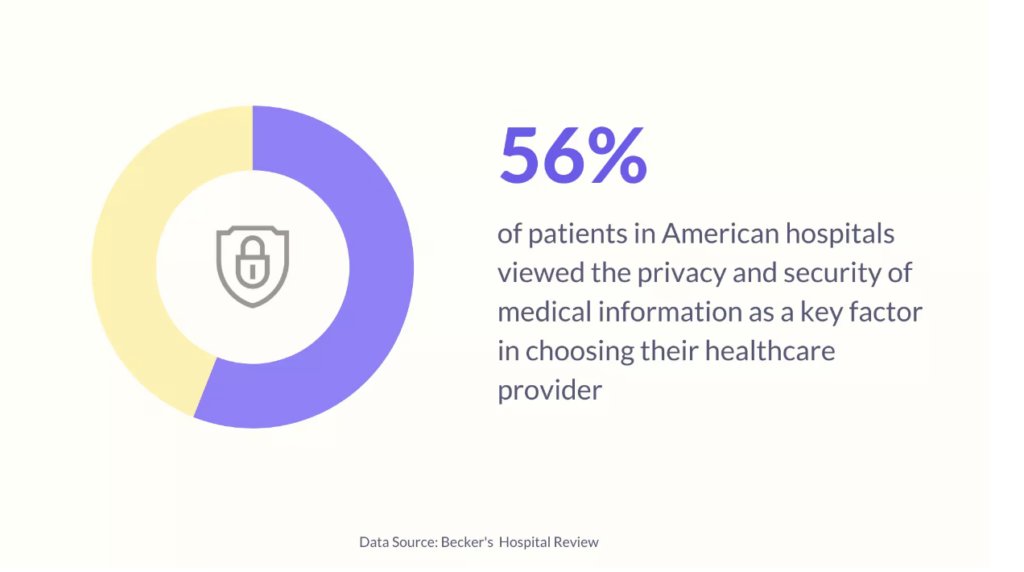
Recommended read: 10 Best HIPAA-compliant Helpdesk Software
7. Leverage technology to improve customer experience
Patients expect more than just treatment from their healthcare provider; they expect care. The end-to-end customer experience includes touchpoints, that can be handled effectively with technological advancements to ensure an exceptional customer service in healthcare.
Here are a couple of touch points and how technology can enable good customer experience at each of these steps.
1. Appointment scheduling
This is typically the first touchpoint a patient has with a hospital/clinic. Here, you would collect basic information about a patient, and their healthcare needs to book an appointment.
As a healthcare provider, you can make this experience seamless by making your data collection process more intuitive and minimizing wait times to chat/talk with an agent. Invest in an accurate and easy-to-useappointment scheduling software on your website, and provide instant appointment confirmation emails/text messages. Furthermore, you can also set up a system to send reminder emails and text messages before appointments.
2. Appointment check-ins/walk-in visits
The patient check-in is usually the first in-person interaction with your customers. In case of scheduled appointments, your front office and administrative staff must have access to all the necessary information provided by the patient while booking the appointment. For this, maintain a centralized system of storing the patient record. This background information will minimize wait times and help patients get the care they need on time. I
In the case of walk-ins, make data collection as seamless as possible.
Leverage technology to collect all necessary information from the patient and store them into the centralized system. This will help capture all the background information, which the doctors and nurses would need at the time of treatment.
These ensure a seamless customer experience and also minimize the time taken for the appointment.
3. Service delivery
This is where the doctors and nurses finally come into the picture. The key to helping doctors and nurses provide better customer service is equipping them with the right tools.
Allow doctors and nurses to quickly pull up medical records. Also, easy access to diagnostic tools can help them make better decisions on behalf of their patients. In addition to this, doctors and nurses should also have the ability to record observations, note patient concerns and queries easily, and put down their final diagnosis and recommendations.
4. Continuation of healthcare/follow-ups
Most healthcare procedures require more than one activity and follow-up appointments. You may need to transfer patients for additional tests, schedule follow-up appointments, or even refer them to other specialists for dedicated treatment and diagnosis.
The simple fact that most healthcare appointments aren’t restricted to a single appointment leads to additional complexities. And according to Deloitte’s research, this seamless transfer of information (or the lack of it) across departments and specialists is where the healthcare customer experience tends to falter.
This is where investing in a centralized customer service software becomes important.
Such software can streamline the transfer of information across departments and specialists. A single and centralized platform for communication and collaboration ensures that all relevant details are stored and shared efficiently and accurately. This reduces the risk of errors, improves patient satisfaction, and ultimately enhances the overall healthcare experience.
Let’s dig a little deeper into how customer service software can create an impact in the healthcare industry.
How Can A Centralized Customer Support Platform Impact Modern Healthcare?
A centralized customer service software can potentially help you deliver exceptional customer service in the healthcare industry. Ultimately, customer service has evolved beyond simply taking phone calls and scheduling appointments. Today, it also focuses on providing a personalized experience at every interaction.
The correct software can have a significant impact. Here’s why:
- Efficient Communication: Customer service software centralizes communication, making it easier for healthcare providers to manage patient interactions. Having all information in one place, whether it be about a prescription or a follow-up visit, guarantees that no communication gets overlooked.
- Effective Workflow Management: Generally, within a customer support system, you have the ability to assign inquiries to your teammates and track the progress of each inquiry. You get complete visibility into the workload of your team. They also help in automating regular tasks such as sending appointment reminders, follow-up emails, and billing statements.
- Data driven insights: The right software can offer valuable information on patient queries and trends in service delivery. If you see an increase in questions about a specific service, you can address it early by offering extra information or resources.
- Compliance and Security: Healthcare institutions manage sensitive patient information, thus it is essential for customer service software to adhere to industry regulations such as HIPAA. A powerful software solutions guarantee secure communication and protection of patient information.
Now let’s try to understand the role of a CS software with a real world scenario.
New Hope Fertility Care Center, a New-York based clinic that specializes in a variety of IVF treatments. And For them, email serves as an important communication channel between the various departments and the patients – be it for providing medical instructions or answering billing-related queries.

The challenge
The nursing department at NHFC uses email to provide instructions to patients, answer their questions, inform them about lab results, and more.
Each department at NHFC had its own group email. Every time a patient sent an email to a group email address, each department member would receive a copy of that email in their work inbox. This meant that if someone emailed [email protected], all the nurses would receive the same email in their inbox.
Because of this, there was no easy way to find out if a patient’s email was responded to or not. Patients’ emails often went unattended. On other occasions, multiple team members answered the same email inquiry.
What NHFC needed was a robust and centralized customer service platform to ensure that no communication slipped through the cracks.
While searching for a solution, the NHFC team came across Hiver — a Gmail-based customer support software.
Solution:
Hiver transformed the way NHFC managed its patient communications by introducing a shared inbox that brought much-needed visibility to the entire team. With Hiver, the NHFC team no longer had to manually check if a patient query was responded to or worry about missed emails. The shared inbox categorized emails into Unassigned, Open, and Closed, allowing team members to easily track the status of every patient query.
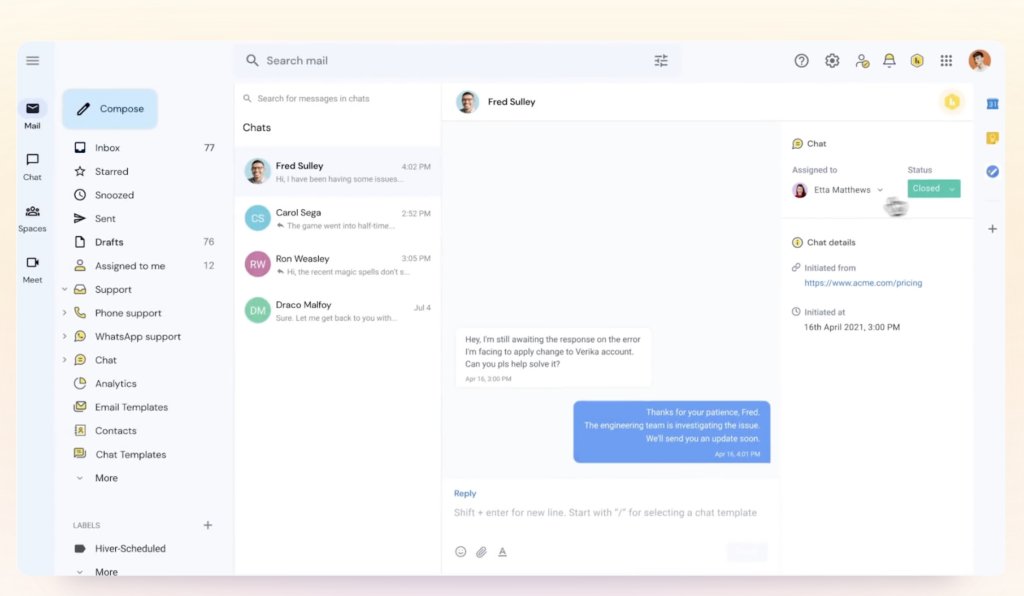
Moreover, Hiver’s Email Notes feature revolutionized internal communication at NHFC. Instead of forwarding emails and losing track of conversations, team members could now leave notes directly within the email thread using @mentions. This facilitated quick and effective collaboration without cluttering inboxes, allowing the NHFC team to resolve queries faster.
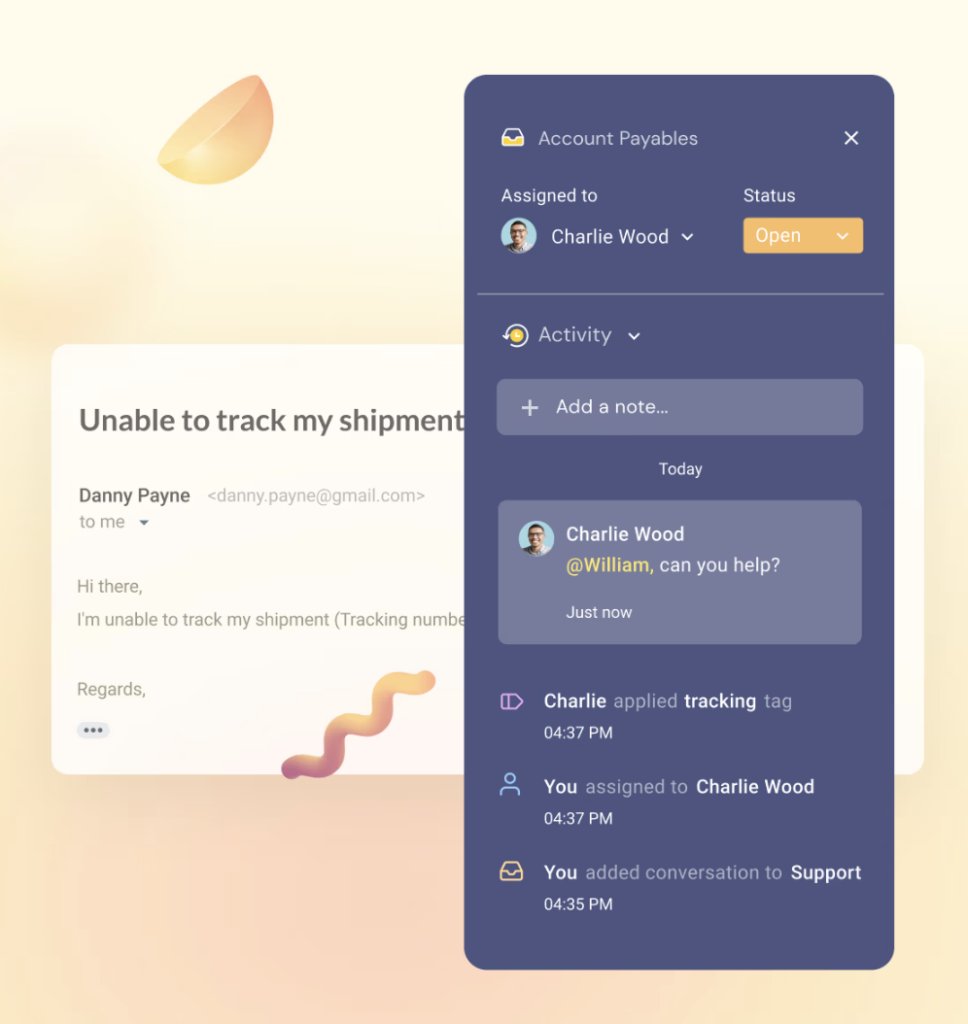
Read more about NHFC in this case study.
Customer service software tools not only improved efficiency and reduced response times, but also ensured that the entire team was always on the same page, delivering a consistent and personalized experience to every patient.
Recommended read: 10 Must-Have Customer Support Tools
The Impact of Poor Customer Service in Healthcare
Till now, we have explored the ways to provide outstanding customer service and now technology can facilitate it. But, it’s also essential to understand the flipside—what happens when customer service in healthcare falls short.
Poor customer service isn’t just an inconvenience; it can negatively impact patients and healthcare providers.. Here’s what happens:
- Decreased patient satisfaction: If patients experience poor service—whether it’s through long wait times, slow response rates, or a lack of empathy—they tend to feel frustrated and neglected. This dissatisfaction not only impacts how they view the treatment they get; it may also result in lower confidence in the healthcare provider and a lack of willingness to seek follow-up care.
- Increased risk of errors: Insufficient customer service in healthcare settings often leads to unclear communication and ineffective information management. These mistakes may result in significant consequences, like misunderstandings about treatment plans or missed appointments for critical procedures.
- Negative impact on staff morale and retention: When healthcare staff are constantly dealing with the fallout of poor customer service—whether it’s handling complaints, dealing with dissatisfied patients, or managing the stress of disorganized communication systems—it can lead to burnout and high turnover rates.
- Damaged reputation and financial losses: Patients who are dissatisfied with their healthcare experience tend to share their stories online – through social media or review platforms, which can harm the healthcare provider’s reputation. This unfavorable image may dissuade potential clients, ultimately leading to financial losses.
Recommended read: 10 Examples of Bad Customer Service
Wrapping up
From integrating technology at every customer touchpoint to addressing every patient’s need with the utmost amount of care, empathy, and everything else that lies in between, there are no limits to what a healthcare provider can do to improve the patient experience.
Excellent customer service is critical in all industries, but maybe, none more than in healthcare. So go ahead, and give your patients the medical care that they deserve by investing in a robust customer service platform.
And if you’re looking for such a tool, you may want to try out Hiver. It integrates seamlessly with your existing inbox, making it easy for teams to manage patient inquiries without moving to a separate interface.
With features like shared inboxes, automations and robust reporting functionalities, Hiver ensures that every patient receives timely, personalized, and consistent care. Plus, its HIPAA compliance guarantees that sensitive patient information is handled securely.
Frequently Asked Questions (FAQ)
- Why is customer service crucial in healthcare?
Customer service in healthcare ensures patients feel cared for and supported, directly impacting their satisfaction and trust in their providers.
- How does technology enhance healthcare customer service?
Technology streamlines communication and workflow, making it easier to manage patient interactions and provide timely, personalized care.
- Why should healthcare providers focus on clear patient communication?
Clear and effective communication helps prevent misunderstandings, ensures patients receive clear instructions, and improves overall patient satisfaction.
- How does a centralized platform improve healthcare workflow?
A centralized platform streamlines communication, reduces errors, and ensures that all patient information is accessible to relevant team members, improving workflow efficiency.













